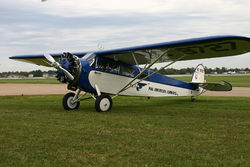| Fairchild 71 | |
|---|---|
 Fairchild 71 in RCAF colours | |
| General information | |
| Type | passenger or cargo transport |
| Manufacturer | Fairchild Aircraft Fairchild Aircraft Ltd. (Canada) |
| History | |
| First flight | 1926 |
| Developed into | Fairchild Super 71 |
The Fairchild 71 was an American high-wing monoplane passenger and cargo aircraft built by Fairchild Aircraft and later built in Canada by Fairchild Aircraft Ltd. (Canada) for both military and civilian use as a rugged bush plane.




